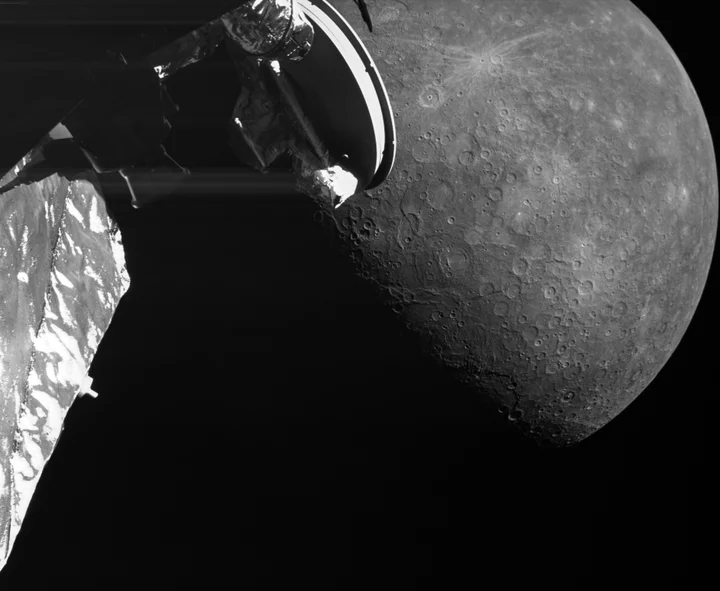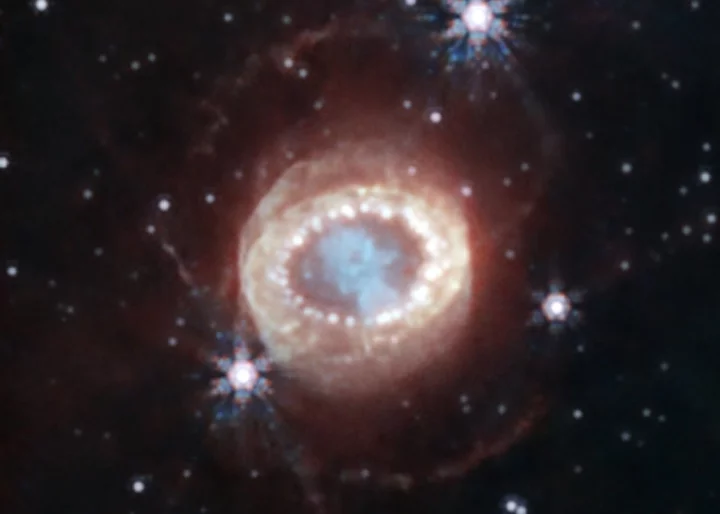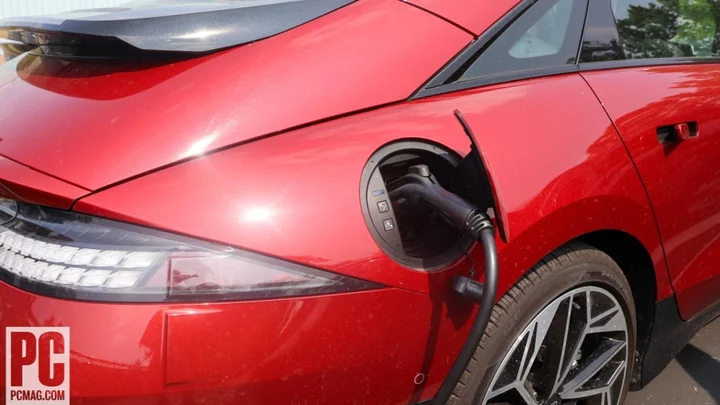A robotic spacecraft just had a close encounter with Mercury and beamed back rare intimate images of the planet.
Mercury, the closest planet to the sun, is perhaps the most overlooked of the rocky worlds in the solar system. Hot and harder to reach than Saturn, it hasn't enjoyed the level of exploration that other planets around the sun have received.
But that won't be the case for long.
The European and Japanese space agencies have collaborated to create the BepiColombo mission, sending an orbiter to study Mercury at close range. The spacecraft just completed its third of six planned flybys on June 19, 2023, allowing the partners to collect hundreds of new images from space and compile a video. The crewless spacecraft grazed less than 150 miles above the surface as it harnessed the planet's gravity.
SEE ALSO: Why 2023 should be dubbed 'Year of the Lunar Landers'This swoop, along with the others scheduled, are needed to overcome the powerful pull of the sun so the craft can eventually get reeled into Mercury's orbit. In 2025, the mission will begin in earnest.
In the video below, watch Mercury emerge as BepiColombo zooms out of the planet’s night side. ESA also has included detailed photos of the terrain at the tail end.
Only two previous spacecraft, both NASA missions, have flown to the Swift Planet, nicknamed as such for its tight orbit around the sun.
"Our spacecraft began with far too much energy because it launched from Earth and, like our planet, is orbiting the Sun," said Frank Budnik, ESA's flight dynamics expert, about the latest maneuver in a statement. "To be captured by Mercury, we need to slow down, and we’re using the gravity of Earth, Venus and Mercury to do just that."
The orbiter approached Mercury from its night side, meaning the side facing away from the sun. Credit: ESA / JAXA Mercury is framed by the antenna of BepiColombo at the top and body of the spacecraft from the bottom. Credit: ESA / JAXABepiColombo, launched in October 2018 on an Ariane 5 rocket from a French spaceport in South America, seeks to study the polar craters filled with ice, the planet's magnetic field, and the enigmatic "hollows" on the surface. Mercury's outer shell is covered in ancient lava flows, pitted by space rocks for the past 4 billion years or so.
Want more science and tech news delivered straight to your inbox? Sign up for Mashable's Light Speed newsletter today.
By broadening their knowledge of Mercury's composition, atmosphere, and magnetism, scientists can better understand how rocky, Earth-like planets came to be.
The photos, taken by black-and-white monitoring cameras, capture one of the spacecraft's solar panels and antennas, with the planet in the top right. They display vast craters and volcanic fields.
One visible feature of particular interest to scientists is Manley Crater, a 135-mile-wide pockmark that has unearthed (or "unmercuried?") dark material that could be leftover from the planet's ancient carbon-rich crust. Inside the basin appears to be a floor of smooth lava, a sign that the planet likely had a long history of volcanic activity. Later in the mission, BepiColombo will study how much carbon the crater contains and what minerals are associated with it.
Another distinct landmark in the two closest images ESA has released show off Beagle Rupes, a steep slope or cliff. This tectonic activity, probably formed from the planet's cooling and contracting, causes the surface to appear wrinkly.
The orbiter approached Mercury from its night side, meaning the side facing away from the sun. These shots were caught about 13 minutes into the flyby when the spacecraft emerged from the shadow and reached the illuminated side.
BepiColombo spots an enormous impact crater and other features as the spacecraft flew past for its third of six flybys. Credit: ESA / JAXA "To be captured by Mercury, we need to slow down, and we’re using the gravity of Earth, Venus and Mercury to do just that."The journey to Mercury hasn't all been smooth sailing. One month ago, mission controllers performed a significant course correction to counter earlier thruster outages. Without it, BepiColombo might have veered about 15,000 miles off track and onto the wrong side of the planet.
The spacecraft is expected to begin the main part of the mission in December 2025, after another scheduled flyby in September 2024. Its two science probes will separate from the module and enter complementary orbits around the planet.
"There are still challenges to tackle in the intervening time," said Ignacio Clerigo, ESA’s BepiColombo operations manager, in a statement.
A version of this story first published on June 21, 2023. It has been updated to include a video of the third BepiColombo flyby released later by ESA.









